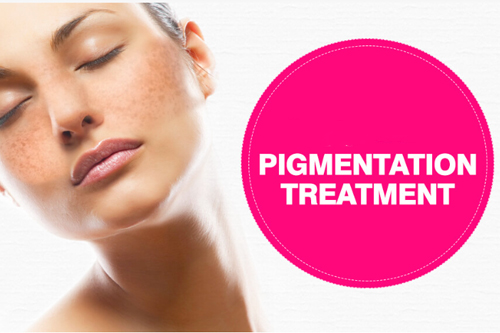
Pigmentation Treatment In Nagpur refers to the various procedures and interventions aim at addressing skin pigmentation issues. Skin pigmentation refers to the coloring of the skin, which is determine by the presence and distribution of melanin, the pigment responsible for skin, hair, and eye color. Abnormalities in melanin production or distribution can lead to various pigmentation concerns.
Pigmentation treatments can address various types of pigmentation concerns, including sunspots, age spots, melasma, and post-inflammatory hyperpigmentation. This versatility allows for tailor solutions bas on specific conditions.
Common pigmentation issues
Hyperpigmentation: This involves darkening of the skin due to an excess production of melanin. Conditions such as sun damage, melasma, and post-inflammatory hyperpigmentation can contribute to hyperpigmentation. Book An Appointment for more issues!
Hypopigmentation: This involves a loss of skin color or lightening of the skin due to a reduction in melanin production. Conditions such as vitiligo and certain types of scars may lead to hypopigmentation.
Uneven Skin Tone: Uneven distribution of melanin can result in an uneven skin tone, with some areas appearing darker or lighter than others.
Pigmentation Treatment options
Topical Treatments:
- Prescription and over-the-counter topical treatments containing ingredients like hydroquinone, retinoids, vitamin C, niacinamide, and alpha hydroxy acids may be use to address pigmentation issues.
Chemical Peels:
- Chemical peels involve the application of a chemical solution to exfoliate the outer layer of the skin, promoting the growth of new, evenly pigment skin.
Laser Therapy:
- Lasers and intense pulse light (IPL) devices can target pigment areas of the skin, breaking down excess melanin and promoting its removal. Laser treatments are commonly use for conditions like sunspots and age spots.
Microdermabrasion:
- Microdermabrasion is a non-invasive procedure that exfoliates the skin using a machine with a diamond-tippe or crystal applicator, helping to improve the appearance of pigmente areas.
Microneedling:
- Microneedling involves the use of tiny needles to create micro-injuries in the skin, stimulating collagen production and improving the appearance of pigmentation irregularities.
Topical Lightening Agents:
- Certain topical agents, such as kojic acid, arbutin, and licorice extract, are known for their skin-lightening properties and may be included in pigmentation treatment plans.
Cryotherapy:
- Cryotherapy involves freezing the pigment areas using liquid nitrogen. It is often used for the removal of certain types of pigment lesions.
Prescription Medications:
- In some cases, dermatologists may prescribe medications to address specific underlying causes of pigmentation issues, such as hormonal imbalances or autoimmune conditions.
Advantages of Pigmentation Treatments
Improved Skin Tone:
- Pigmentation treatments, such as chemical peels, laser therapy, and topical agents, can help improve overall skin tone by reducing hyperpigmentation and promoting a more even distribution of melanin.
Reduced Hyperpigmentation:
- Hyperpigmentation, which involves darkening of the skin, can be effectively treated with various interventions. Pigmentation treatments target excess melanin production and help fade dark spots cause by factors like sun damage, melasma, and post-inflammatory hyperpigmentation.
Enhance Skin Clarity:
- Pigmentation treatments contribute to clearer skin by minimizing the appearance of pigmente lesions, spots, and uneven skin tone. This can result in a smoother and more radiant complexion.
Boost Confidence:
- Addressing pigmentation concerns can have a positive impact on a person’s self-esteem and confidence. Achieving a more even and balance skin tone often leads to increase satisfaction with one’s appearance.
Youthful Appearance:
- Some pigmentation treatments, such as chemical peels and laser therapy, stimulate collagen production, contributing to skin firmness and a more youthful appearance. Collagen is a protein that supports skin structure and elasticity.
Customized Treatment Plans:
- Dermatologists and skincare professionals can create customize treatment plans base on individual skin types, pigmentation concerns, and lifestyle factors. This personalize approach increases the effectiveness of the treatment.
Minimized Appearance of Scars:
- Certain pigmentation treatments, like laser therapy and micro needling, can help minimize the appearance of scars, including those resulting from acne or injuries. These treatments stimulate the skin’s natural healing processes.
Safe and Non-Invasive Options:
- Many pigmentation treatments are non-invasive and considered safe when performed by qualified professionals. Non-invasive options, such as topical agents and laser therapy, often have minimal downtime and side effects.
Long-Term Results:
- While individual responses may vary, pigmentation treatments can provide long-term results when combine with proper skin care and sun protection. Consistent maintenance and follow-up care can help sustain the improvements achieve.
